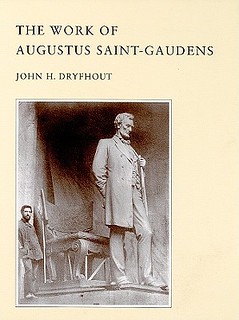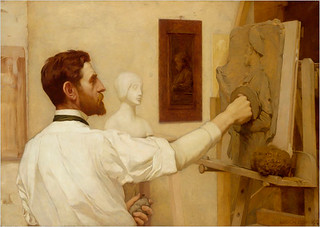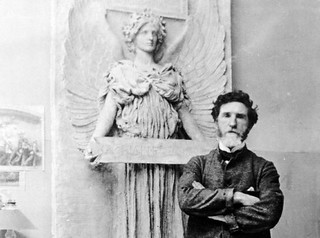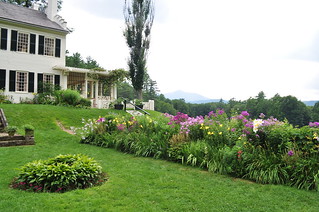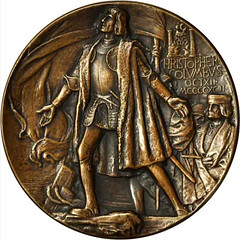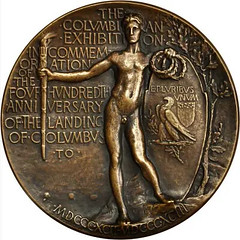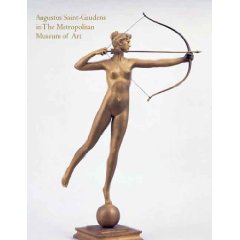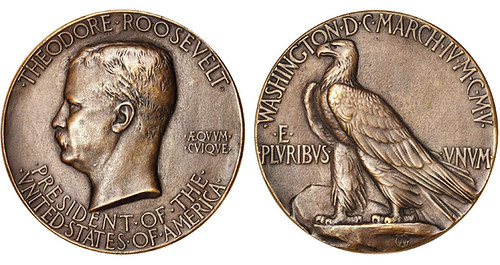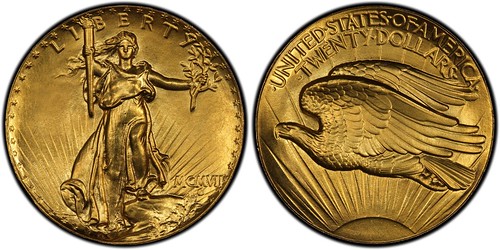
PREV ARTICLE
NEXT ARTICLE
FULL ISSUE
PREV FULL ISSUE
V25 2022 INDEX E-SYLUM ARCHIVE AUGUSTUS SAINT-GAUDENS (1848-1907)American Numismatic Biographies author Pete Smith submitted this article on Augustus Saint-Gaudens. Thanks! -Editor
Augustus Saint-Gaudens was born on March 1, 1848, in Dublin, Ireland. His father was Bernard Paul Ernest Saint-Gaudens who was a French shoemaker. His mother was Mary McGuiness, an Irish co-worker in the shoe factory. Their last name comes from the town of Saint-Gaudens in southern France (next to Aspet) and the town was named for a Christian martyr. The family came to Boston and settled in New York City when Augustus was six months old. In 1861 he was apprenticed to a cameo cutter. He left his apprenticeship in 1864 and began work with cameo cutter Jules Le Brethon. While working there he took drawing classes at Cooper Union and evening classes at the National Academy of Design.
In 1870 he cut a cameo for Elmire (Almira) C. Whittlesey and did a pencil sketch of her nine - year-old daughter Fanny Smith Whittlesey. Those names would have made no impression a week ago until I wrote about Sarah Victoria Whittlesey Pratt, Mother of Bela Lyon Pratt. Their common ancestor goes back about six generations.
Back in Rome in 1873 he sculpted a number of busts. In December of 1873 he met Augusta Fisher Homer, a deaf student from Boston. They were engaged on April 15, 1874, and were married at Roxbury, Massachusetts, on June 4, 1877. Their only son, Homer, was born in Boston on September 29, 1880. He was memorialized with an 1882 bronze relief.
He produced the model for He returned to New York in 1875 to work for Tiffany Studios. In 1877 he did the model for his first major public commission, the Farragut Memorial in Madison Square Park in New York. In 1884 he began work on the Abraham Lincoln Monument for Lincoln Park in Chicago.
In 1886 he produced a marble head of Diana as a study for an intended larger statue. The model was Davida Johnson Clark. She is a bit of a mystery. Albertina Hultgren was born in Sweden and came to America in 1879 at age seventeen to work as a model. She may have met Saint-Gaudens in 1880. It is believed she became his mistress in 1884. By 1885 she was transformed somehow to Davida Johnson and later Davida Johnson Clark. Davida had an androgenous beauty and may have been named for Michelangelo's David. Another possibility is the 1878 David by Antonin Mercie.
In June of 1889, Davida gave birth to a son, Louis P. Clark, fathered by Augustus Saint-Gaudens. In 1892, Saint-Gaudens executed a bronze relief study of a child named The neo-classical works gave way to the Beaux-Arts style, a period generally between the American Centennial of 1876 and the First World War. Saint-Gaudens had studied under Jouffroy in Paris and was one of the early practitioners of the style in America. In his workshops and as an instructor at the Arts Students League, he influenced a generation of artists including some like Bela Lyon Pratt who worked in his studio. Oher coin designers who worked under Saint-Gaudens include John Flanagan, James Earl Fraser and Adolph Weinman. For the 1889 centennial of the George Washington Inauguration, Saint-Gaudens designed a medal commissioned by the Committee on Commemoration. His assistant, Philip Martiny modeled the relief and Saint-Gaudens held the copyright. This was Saint-Gaudens first commercial medal and was an influence on others in the Beaux-Arts style. The medals were not struck but rather cast by Gorham Manufacturing Company with 2000 in bronze and 10 in silver. Saint-Gaudens modelled the obverse for the World's Columbian Exposition Commemorative Presentation medal for 1893. His reverse design, including a standing eagle, was not used.
At about the same time he was doing the gilt bronze Sherman Monument in New York's Central Park. It features William Tecumseh Sherman on horseback. Leading the horse is a Winged Victory with outstretched arm. It is believed that Davida was the model for that figure. She took on a life of her own and appeared later on the $20 gold coin. Hettie Anderson was the model for the head. A devastating 1904 fire at his studio in Cornish, New Hampshire, destroyed finished sculptures plus archival sketches, drawings and plaster models. Saint-Gaudens designed the 1905 Theodore Roosevelt Special Inaugural Medal in gold. It was modelled by Adolph Weinman. The reverse shows a Ptolemaic standing eagle, previously seen on Saint-Gaudens rejected reverse for the Columbian Exposition Medal. Roosevelt requested that Saint-Gaudens produce dies for new bronze one cent, $10 and $20 gold coins. The cent was never issued. The $10 gold eagle has an obverse head of Liberty wearing a feathered bonnet. The reverse had a Ptolemaic eagle similar to the eagle on the rejected reverse for the Columbian Exposition medal. Saint-Gaudens had used a similar eagle on his Shaw Memorial and on the gold Roosevelt Inaugural medal. Shaw may be remembered from the 1989 movie Glory. An early design for the $20 gold coin (.900 gold) was a winged Victory similar to the Sherman Monument. She lost her wings before being struck in ultra-high relief as coins that would not stack. These were only produced in MCMVII. A lower relief version was used between 1907 and 1933. The coin is thought by many to be the most beautiful American Coin. If you own the 1933 double eagle, you may also consider it the most valuable U. S. Coin. (I have seen a dozen of them.) Liberty on the double eagle is somewhat similar to Winged Victory on the Sherman Monument. If Davida was the model for the Sherman Monument, she may have also been the model for the body on the double eagle. It is now believed the model for the head was Hettie Anderson. Augustus Saint-Gaudens was diagnosed with cancer in 1900 and his health and productivity gradually declined. He died on August 3, 1907, and was cremated. His ashes are at the Saint-Gaudens Memorial at Cornish, New Hampshire. His home and studio are now in Saint-Gaudens National Historic Park maintained by the National Park Service. In the 1910 Census, Davida J. Clark was living with her 20-year-old son, Louis P. Clark. The death of Davida Johnson Clark was recorded on September 15, 1910, with her date of birth listed as December 30, 1861. She is buried at Spring Grove Cemetery in Darian, Connecticut. Also buried there is her mother, Maria Louisa Johnson. How Albertina Hultgren became the daughter of Maria Louis Johnson is a mystery I have not solved. With little actual known biography, her life was fictionalized by Karen Ingalls as Davida: Model and Mistress of Augustus Saint-Gaudens published in 2016. Ingalls was a great-granddaughter of Clark. The general design from the Saint-Gaudens double eagle was resurrected for the American Gold Eagle bullion coins introduced in MCMLXXXVI. (That's 1986 for those who don't speak Roman.) In 2009 the Mint copied the design for a 24 kt gold coin described as ultra-high relief. The piece is a tribute to the original Saint-Gaudens design. Perhaps an equally artistic tribute could be made with chocolate wrapped in gold foil.
Wayne Homren, Editor The Numismatic Bibliomania Society is a non-profit organization promoting numismatic literature. See our web site at coinbooks.org. To submit items for publication in The E-Sylum, write to the Editor at this address: whomren@gmail.com To subscribe go to: https://my.binhost.com/lists/listinfo/esylum All Rights Reserved. NBS Home Page Contact the NBS webmaster 
|
